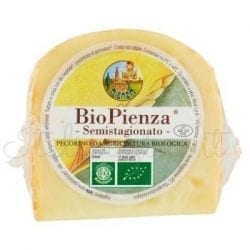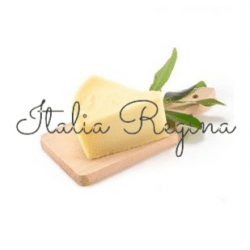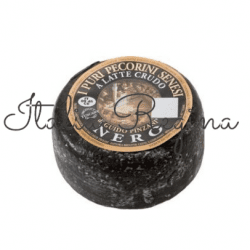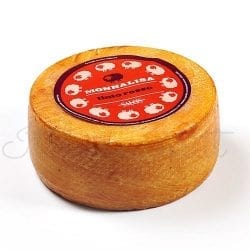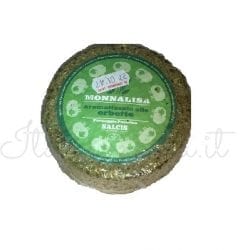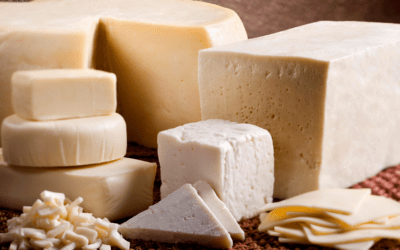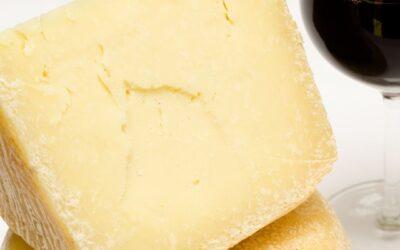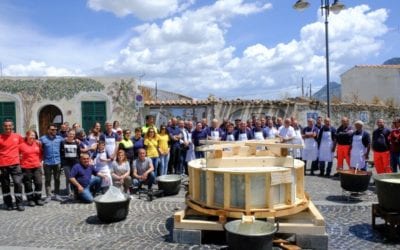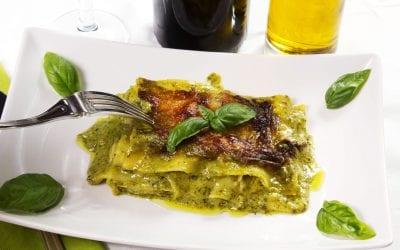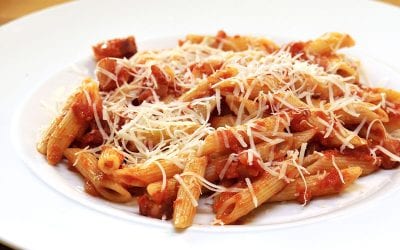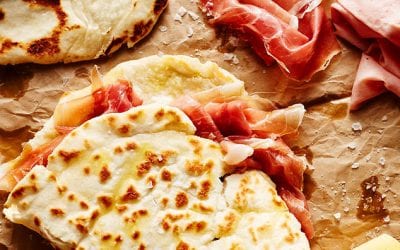Pecorino the most Italian ancient cheese
Hard cheeses produced in Italy, made from ewe’s milk, are called “Italian Pecorino”.
The Italian name “pecora” means “sheep”, deriving from the Latin word “pecus”, which means livestock, domesticated animals, used in agricultural setting to obtain food.
There are different varieties, produced around the country. Seven of them have Protected Designation of Origin status (PDO, in Italian – DOP) under the European Union law.
-

Italian Pecorino (BIO) – Alival GROUP 380 gr
€7.00 -

Italian Pecorino (Matured PDO) – Pecorino Toscano 900 gr
€24.00 -

Italian Pecorino (Sardo) – Pecorino Sardo DOP
€8.50 -

Italian Pecorino (Senese Black) – Caseificio Pinzani 200 gr
€7.00 -

Italian Pecorino (Senese Peppery) – Caseificio Pinzani 200 gr
€7.00 -

Italian Pecorino (Toscano PDO Creamy) – Pecorino Toscano 1 kg
€23.00 -

Italian Pecorino Cheese – Salcis Rigatino Tinto Rosso 400 gr
€11.70 -

Italian Pecorino Cheese Herb Infused – Salcis 400 gr
€11.70 -

Italian Pecorino Romano DOP
€8.00
Discover Pecorino
The variety of flavors of the Italian pecorino are determined by the milk used and by the age of the cheese. Depending on the type of the cheese they wish to produce determines the length of the aging process: creamy, hard, or drum-shaped cheeses. In Italian, they are called “fresco”, “semi stagionato” and “stagionato”.
This classic Italian pecorino cheese is now available in many different flavors, such as walnuts, black or white truffle, rocket, black peppercorns or red chili flakes. It is also served in some dishes as a good substitute for the well-known cheese Parmigiano Reggiano or it is eaten at the end of a meal, served with pears and walnuts or drizzled with strong chestnut, honey.
Romano
 The best-known type outside of Italy is the “Pecorino Romano” – one of the most ancient types of cheese. The name “Romano” comes from the Roman era, as it was given to the soldiers during the war due to its long-term storage capacity. Ancient Roman authors wrote about this cheese and its production technique. Nowadays this cheese continues to be produced using only traditional methods and only in unique areas, such as the island of Sardinia, Lazio and in the province of Grosseto, in Tuscany.
The best-known type outside of Italy is the “Pecorino Romano” – one of the most ancient types of cheese. The name “Romano” comes from the Roman era, as it was given to the soldiers during the war due to its long-term storage capacity. Ancient Roman authors wrote about this cheese and its production technique. Nowadays this cheese continues to be produced using only traditional methods and only in unique areas, such as the island of Sardinia, Lazio and in the province of Grosseto, in Tuscany.
Toscano

Another PDO is “Pecorino Toscano” which comes from Tuscany. Pliny the Elder (I century), in his “Monumental Naturalis Historia”, mentions some steps in the production of this cheese, that once was called “cacio marzolino”, cheese of March, due to the month in which the production used to begin.
Sardo
 “Pecorino Sardo” is the only PDO cheese made with whole milk from ewes, exclusively reared on the island of Sardinia. The young Sardo is about 1-2 months old, it has flat surfaces and a straight or slightly convex whole circumference. With its thin, white or pale yellow surface, it has a delicate, aromatic or slightly acidulous taste and a white, soft, compact texture with a sparse small hole. The mature type is more than 6 months old and needs a temperature controlled environment to maintain its edibility.
“Pecorino Sardo” is the only PDO cheese made with whole milk from ewes, exclusively reared on the island of Sardinia. The young Sardo is about 1-2 months old, it has flat surfaces and a straight or slightly convex whole circumference. With its thin, white or pale yellow surface, it has a delicate, aromatic or slightly acidulous taste and a white, soft, compact texture with a sparse small hole. The mature type is more than 6 months old and needs a temperature controlled environment to maintain its edibility.
Filiano
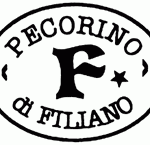 “Pecorino di Filiano” PDO, is a hard cheese produced in the province of Potenza, in Basilicata at Filiano, created using only the milk milked from a particular species of sheep. It must be matured for at least 180 days in tufa caves or in particular underground spaces. It has a cylindrical shape and weight in the range from 2,5 to 5 kg, in a relation of the size of the form. 43 years ago, in the region of Basilicata, the first festival was organized. The next festival will take place in the upcoming September.
“Pecorino di Filiano” PDO, is a hard cheese produced in the province of Potenza, in Basilicata at Filiano, created using only the milk milked from a particular species of sheep. It must be matured for at least 180 days in tufa caves or in particular underground spaces. It has a cylindrical shape and weight in the range from 2,5 to 5 kg, in a relation of the size of the form. 43 years ago, in the region of Basilicata, the first festival was organized. The next festival will take place in the upcoming September.
Crotonese
 “Pecorino Crotonese” PDO is named this due to the province in which it is made, Crotone, in the region of Calabria. It is produced using two parts of ewe’s milk and one of the cow’s milk.
“Pecorino Crotonese” PDO is named this due to the province in which it is made, Crotone, in the region of Calabria. It is produced using two parts of ewe’s milk and one of the cow’s milk.
Picinisco
 “Pecorino di Picinisco”, is produced with milk from ewes and goats that reside in the national park of Abruzzo. This cheese is the most favorite among the shepherds in this area.
“Pecorino di Picinisco”, is produced with milk from ewes and goats that reside in the national park of Abruzzo. This cheese is the most favorite among the shepherds in this area.
Siciliano
 The last PDO is “Pecorino Siciliano”, called “Picurinu Sicilianu” in the dialect of Sicily, where it is produced. This cheese comes from the classical Greek world. In ancient times it was recognized as one of the best cheeses in the world.
The last PDO is “Pecorino Siciliano”, called “Picurinu Sicilianu” in the dialect of Sicily, where it is produced. This cheese comes from the classical Greek world. In ancient times it was recognized as one of the best cheeses in the world.
Nutritional Values of Pecorino
Eating Italian Pecorino means to add to our diet vitamins, like A, B1, B2, PP and minerals such as calcium, phosphorus, and iron which, in a natural, organic substrate is easily and completely absorbed. Italian Pecorino is also a source of protein: during the ripening processes, the microbial and enzymatic modifications break the protein releasing considerable amounts of essential amino acids (valine, lysine, leucine) and non-essential amino acids (glutamic acid) that are very important because of their high nutritional value. Both fresh and mature Italian Pecorino are rich in important nutritional elements, which change, however, depending on the intensity and the duration of the production process. Plus, it has been scientifically proven that the Omega 3 and Omega 6 fatty acids (better known as CLA) of which Pecorino is rich have not only high nutritional properties but also therapeutic properties. They help bone formation, improve immune functions, contribute to the reduction of fat mass, perform antioxidant activity and promote the prevention of cardio-vascular diseases.
History of Pecorino Romano
Pecorino Romano has such ancient origins as few kinds of cheese in the world: in the imperial palaces of the ancient Romans, it was a prized dressing at banquets, while its long-term storage capacity lets to be used for merchant Roman legions rations. A daily ration of 27 grams was established to be given to the Legionaries, as a supplement to the bread and farro soup. This cheese gave back strength and vigor to tired soldiers giving energy easy to digest. Thanks to the nutritional properties and the ease of transport and storage, its transformation technique spread over the centuries in Tuscany and Sardinia.
Also, Homer described the processing of sheep’s milks and Columella gives a detailed description in his “De re rustica”:
“[…] the milk is generally curdled using lamb’s or kid’s rennet (…) The milking bucket, when it has been filled with milk, should be kept at a medium heat. Do not let it come near fire […] rather keep it well away from the fire, and as soon as the liquid is curdled, it should be transferred into baskets or molds. In fact, it is essential that the whey can drain immediately and be separated from the solid matter […]. Then when the solid part is removed from the baskets or molds, it should be placed in a cool, dark place so that it does not go off, on tables as clean as possible, and sprinkled with ground salt so that it can sweat.
To preserve its characteristics, Pecorino Romano must be kept in the refrigerator wrapped in paper or a cotton cloth and, to better appreciate its aromatic taste, it must be kept at room temperature for at least an hour, before being served.
History of Pecorino Toscano
The oldest name of Italian Pecorino Toscano was marzolino and it referred to the month of March (marzo in Italian) when production begins. in 1475 the writer Bartolomeo Platina said that the Etruscan marzolino was as good as Parmesan cheese: “In Italy there are two types of cheese that compete for the first place: marzolino, so called by the Etruscans because it is made in Etruria in March, and Parmesan cheese, from the Cisalpine region, that is also known as maggengo, because it is produced in May (maggio in Italian)”.
Cheese processing did not follow set rules for centuries, so quality and features could differentiate it from other cheeses: in families, only one person was tasked with preparing cheese, following the rules handed down from father and son and refined by experience and shared wisdom.
The Linnaean Society of Paris member Ignazio Malenotti championed and set out to promote this practice and improve the techniques of breeding and milk processing. He published the “Shepherd’s manual” in 1832 where he describes sheep breeding techniques and the best method for preparing Tuscan Pecorino cheese, “the one used in every part of Tuscany”.
History of Pecorino Sardo
Pecorino Sardo is one of the oldest cheeses in Sardinia. The first precise historical information on the ancient origins of Pecorino Sardo DOP dates back to the end of the 18th century. The cheeses we are talking about were called the Whites, the Reds Fini, the Smoked, the Fresa and the Spiatatu. Among these, Rosso Fino and Smoked can be considered the progenitors of Pecorino Sardo.
These cheeses were obtained from raw milk or from milk heated with red-hot stones immersed for this purpose. Over the centuries, the processing techniques have refined and the teachings of tradition gradually merged with new and more innovative transformation practices. In addition, between the end of the 19th century and the beginning of the 20th century, new production methods such as the use of the thermometer, the filtration of milk, the use of titrated liquid rennet spread.
Thanks to modern machinery and technological innovations, the hygienic conditions of processing have been improved, the heat treatments, the times and methods of semi-cooking of the curd have been rationalized, the use of natural grafts of lactic bacteria and rennet. Especially since the 1960s, there has been a continuous refinement of the characteristic technology of production of Pecorino Sardo that has survived until today, without ever forgetting the teachings of tradition.
Recipes Pecorino
The Danger of Counterfeit Cheeses
Beware of counterfeit cheeses, which are more common than you might think and which are also harmful to health. Counterfeit cheeses, how can we recognize them? Usually for us Italian and who know the labels of our products well, it is not particularly...
Pecorino Cheese: 5 Reasons Why You Should Eat It
Even though doctors and dieticians recommend a sparing use of cheeses, consuming 30/40 gr of pecorino cheese a day helps to satisfy our body's need in terms of proteins, phosphorus and calcium. This type of cheese is actually very high in proteins and overall...
World largest Pecorino: it’s a Guiness Record!
Italy just set a new Guinness World Record for The Largest Pecorino In The World – Il Gigante del Cedrino.
Pesto Lasagne
Pesto Lasagne is a recipe that combines two typical dishes of Italian culinary tradition: fresh egg pasta and Ligurian pesto. The bechamel sauce is a must in this recipe, which with its velvety touch makes everything more creamy and harmonious. The lasagna with...
Penne with Amatriciana Sauce
Pasta with Amatriciana sauce is a traditional, zesty Italian pasta sauce, based on guanciale, (salt-cured pork jowl), pecorino cheese and tomato. Originating from the town of Amatrice (in the mountainous Province of Rieti of Lazio region), the Amatriciana is one of...
Piadina Romagnola
Piadina Romagnola is a thin Italian flatbread, typically prepared in the Romagna region. It is usually made with white flour, lard or olive oil, salt, and water. The dough was traditionally cooked in a terracotta dish, although nowadays flat pans or electric griddles...

